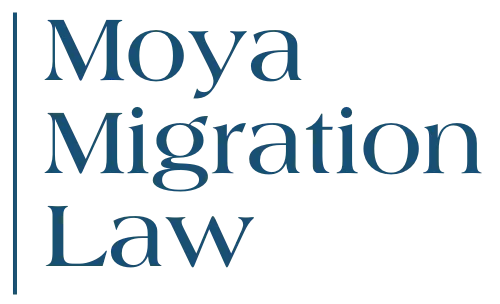Introduction
Receiving an unsuccessful decision from the Administrative Review Tribunal (ART) on a visa refusal appeal can be profoundly distressing. This refusal decision marks the end of the merits review process, placing a visa applicant at a critical juncture where the following decisions carry significant consequences for their future in Australia.
Although this outcome is disappointing, an unsuccessful ART appeal is not necessarily the end of the road. This guide provides essential information on the available pathways, focusing on strategic options such as seeking a judicial review, lodging a new visa application, or requesting ministerial intervention to help you navigate this challenging time.
Immediate Consequences of an Unsuccessful Appeal
Bridging Visa Status & the 35-Day Deadline
Following an unsuccessful ART appeal, your bridging visa—which maintained your lawful status during the review—is directly impacted. This triggers a strict time limit within which you must take action, and the specific timeframe depends on when your bridging visa was granted.
For most visa applicants, the bridging visa will automatically cease 35 days after the date of the ART’s decision. This applies to any bridging visa granted on or after 19 November 2016. However, for the few individuals whose bridging visa was granted before this date, the period is 28 days from notification of the decision.
This deadline is critical. Failing to act before your bridging visa expires has severe consequences, including:
- Becoming an unlawful non-citizen: Your legal status in Australia ends when your bridging visa ceases.
- Immigration detention and removal: As an illegal non-citizen, you can be detained and forcibly removed from Australia by the Department of Home Affairs.
- A three-year re-entry ban: If you remain in Australia for more than 28 days after your visa expires, you will likely face a three-year ban that prevents you from being granted most temporary Australian visas.
The Section 48 Bar & New Visa Restrictions
One of the most significant legal obstacles following a visa refusal is the “Section 48 bar” under the Migration Act 1958 (Cth). This provision is activated when a person in Australia has a visa application refused and does not hold a substantive visa (i.e., they hold a bridging visa). The purpose of this bar is to prevent individuals from lodging multiple visa applications to prolong their stay after a final decision has been made.
The Section 48 bar prevents you from making a valid application for most other visas while you remain in Australia. This drastically limits your options to apply for another visa from within the country.
However, there are a few important exceptions to this rule. You may be able to apply for another visa if it is one of the following prescribed types:
- Partner Visa (Subclass 820/801)
- Protection Visa (Subclass 866)
- Medical Treatment Visa (Subclass 602)
- Child Visa (Subclass 802)
- Certain skilled visas, provided you receive a nomination from a state or territory government under a specific waiver
Request Your Free 15-Min Consultation
Option 1: Judicial Review in Federal Court
Jurisdictional Error as the Sole Ground for a Court Appeal
If your ART appeal is unsuccessful, you may have the option to challenge the decision in the federal courts through a process called judicial review. This fundamentally differs from the merits review the ART conducted.
While the ART’s role was to determine the “correct or preferable” decision by re-examining the facts and evidence of your visa application, a court’s role in judicial review is not to reconsider the facts or decide if you deserve a visa.
The court’s only function is determining if the ART committed a “jurisdictional error” in its decision-making process. This is the sole ground for a court appeal and refers to a significant legal mistake that means the ART acted beyond its authority. A decision affected by a jurisdictional error is considered invalid according to the law.
Common examples of jurisdictional error include situations where the ART has:
- Denied procedural fairness: This occurs if you were not given a fair chance to present your case, such as not being allowed to respond to adverse information.
- Misunderstood the law: The ART may have misinterpreted a legal requirement for the visa and assessed your application against the wrong criteria.
- Failed to consider relevant information: The law may require the ART to consider specific matters, which can invalidate the decision.
- Relied on irrelevant information: The decision may be flawed based on factors that the law does not permit the ART to consider.
- Made an irrational decision: This is a high threshold, requiring proof that the decision was so illogical or unreasonable that no rational decision-maker could have reached it.
Furthermore, any identified error must be “material,” meaning it must have had a realistic potential to affect the outcome of the decision. If the court believes the ART had made the same decision even without the error, the appeal will not succeed.
The Court Process Timelines & Potential Costs
The process for seeking judicial review is formal, expensive, and subject to strict deadlines. An application must be filed with the Federal Circuit and Family Court of Australia (FCFCOA) within 35 calendar days of the date of the ART’s decision. This deadline is critical, and extensions are granted only in exceptional circumstances.
The financial commitment for judicial review is substantial. As of July 2024, court filing fees can be significant, with an initial application fee of $3,920. However, the most important financial risk is an “adverse costs order.” If your application is unsuccessful, you will likely be ordered to pay the government’s legal costs, which can exceed $8,000.
The court process can be lengthy, often taking a year or more to reach a final hearing. If a judicial review application is successful, it’s essential to understand that:
- The court will not grant you a visa
- The typical outcome is that the court will quash (cancel) the ART’s decision
- Your case will be remitted (sent back) to the ART to be heard again by a different member
This gives you another opportunity at the ART but does not guarantee a different outcome for your visa application.
Option 2: Applying for a New Australian Visa
Onshore Visa Applications Exempt from the Section 48 Bar
After an unsuccessful ART appeal, lodging a new visa application from within Australia is significantly restricted by Section 48 of the Migration Act 1958 (Cth). This “Section 48 bar” prevents a person who has had a visa refused and holds a bridging visa from applying for most other visas while remaining in the country. However, the Migration Regulations 1994(Cth) provide a specific list of visas exempt from this rule, creating a potential pathway for some applicants.
If you can apply for one of these visas, you may lodge a valid visa application onshore. The primary visa types exempt from the Section 48 bar include:
| Exempt Visa Type | Description |
|---|---|
| Partner Visa (Subclass 820/801) | For those in a genuine and continuing relationship with an Australian citizen, permanent resident, or eligible New Zealand citizen. |
| Protection Visa (Subclass 866) | For individuals in Australia who fear persecution or significant harm if they return to their home country. |
| Medical Treatment Visa (Subclass 602) | A temporary visa allowing an individual to remain in Australia for medical treatment, provided they have made arrangements and can cover costs. |
| Child Visa (Subclass 802) | For a dependent child of an Australian citizen, permanent resident, or eligible New Zealand citizen. |
| Skilled Visas with a State or Territory Nomination | Allows application for certain skilled visas (e.g., Subclass 190, 491) if the applicant receives a nomination from a state or territory government. |
Departing Australia to Lodge an Offshore Application
If you are subject to the Section 48 bar and do not meet the criteria for an exempt visa, your only other option for a new visa application is to depart Australia and apply from overseas. An offshore visa application allows you to bypass the restrictions of the Section 48 bar, but it requires careful strategic planning.
Simply resubmitting the same application will likely lead to another visa refusal. Instead, a successful offshore application must directly address the reasons for the original refusal decision. This involves providing new and compelling evidence to overcome the Department of Home Affairs’ previous findings.
Furthermore, you must still meet all the eligibility criteria for the visa at the time of the new application.
Managing potential complications, such as a re-entry ban, is also critical. If you remained in Australia unlawfully for more than 28 days after your bridging visa expired, you may be subject to a three-year re-entry ban. In this case, an offshore application would need to include a strong request for a waiver of this ban, supported by evidence of compelling or compassionate circumstances.
Request Your Free 15-Min Consultation
Option 3: Requesting Ministerial Intervention
The Public Interest Test & Compelling Circumstances
Requesting Ministerial Intervention is a final resort for a visa applicant after an unsuccessful ART appeal. This is not a standard appeal, but a discretionary power held by the Minister for Immigration under the Migration Act 1958 (Cth).
The Minister can personally intervene and grant a visa if they believe it is in the “public interest”. This power is entirely non-compellable, meaning the Minister cannot be forced to consider a case.
It is reserved for a few cases with unique, compelling, and compassionate circumstances that fall outside the strict criteria of visa regulations. The Department of Home Affairs assesses requests against public guidelines to identify these exceptional cases.
Key grounds that may warrant the Minister’s attention include:
| Grounds for Intervention | Description of Circumstances |
|---|---|
| Strong compassionate factors | Situations where an applicant’s departure would cause “serious, ongoing and irreversible harm” to an Australian citizen or permanent resident. |
| Exceptional benefit to Australia | The applicant can demonstrate a unique and outstanding economic, scientific, or cultural contribution they would make to the Australian community. |
| Unintended legislative consequences | The strict application of migration law leads to an outcome that is unfair or was not anticipated by Parliament. |
| Inability to return home | Circumstances beyond the applicant’s control, such as war or a natural disaster in their home country, prevent their return. |
| Other human rights concerns | The applicant faces significant threats to their security or dignity upon return that do not meet the specific legal definition for a protection visa. |
The Application Process & Expected Timeline
Requesting Ministerial Intervention begins with a written submission to a dedicated Department of Home Affairs unit. This is not a simple form, but a detailed and persuasive document that must:
- Clearly explain why the case is unique
- Directly address the Minister’s public interest guidelines
A strong submission must be supported by extensive documentary evidence. This can include:
- Medical reports
- Psychological assessments
- Letters of support from community leaders or Members of Parliament
- Statutory declarations from affected Australian family members
The goal is to build a powerful, evidence-based narrative that justifies a departure from the standard application of the law.
This pathway is notoriously slow, and a decision can take many months or even years. First, the Department assesses the request, and only a small fraction of cases are ever referred to the Minister for a personal decision.
During this processing time, which often exceeds 12 to 18 months, the visa applicant typically holds a Bridging Visa E (BVE), which may come with no work rights, creating significant hardship. It is crucial to understand that the success rate for Ministerial Intervention is extremely low, as it is an exceptional measure for truly extraordinary circumstances.
Option 4: Preparing for Departure from Australia
Lawful Departure & Avoiding Re-entry Bans
If other legal avenues, such as judicial review or a new visa application, are not viable after an unsuccessful ART appeal, you must prepare to depart Australia. Following the refusal decision, your bridging visa will typically expire within a strict time limit, usually 35 days, leaving a critical window to act.
Adhering to this departure timeline is crucial. If you fail to leave before your bridging visa ceases, you will become an “unlawful non-citizen” under the Migration Act 1958 (Cth). This has severe and immediate consequences that can impact plans to come to Australia.
Overstaying your visa can lead to several serious outcomes, including:
- Detention and Removal: The Department of Home Affairs is authorised to locate, detain, and forcibly remove any unlawful non-citizens from the country.
- Three-Year Re-entry Ban: If you remain in Australia for more than 28 days after your visa expires, you will likely become subject to a three-year re-entry ban. This ban, also known as an exclusion period under Public Interest Criterion (PIC) 4014, prevents you from being granted most temporary Australian visas three years after departure.
- Debt to the Commonwealth: You may be required to pay for the costs associated with your detention and removal. This debt must be repaid before you can be granted another Australian visa.
A lawful and timely departure is essential to avoid these penalties and preserve your eligibility to apply for another visa from overseas in the future. Ensuring you leave within the specified timeframe helps maintain a clean immigration record, vital for any subsequent visa application.
Request Your Free 15-Min Consultation
Conclusion
An unsuccessful ART appeal places you at a critical juncture, but is not the end of your migration journey. Understanding your options, from seeking a judicial review for a legal error to lodging a new visa application or preparing for a lawful departure, is the first step toward making an informed decision.
Navigating this complex legal landscape requires strategic guidance and an in-depth understanding of migration law. To explore the best pathway for your specific circumstances, contact our specialised visa judicial review lawyers at Moya Migration Law today for a comprehensive assessment and tailored advice on your visa appeal.









